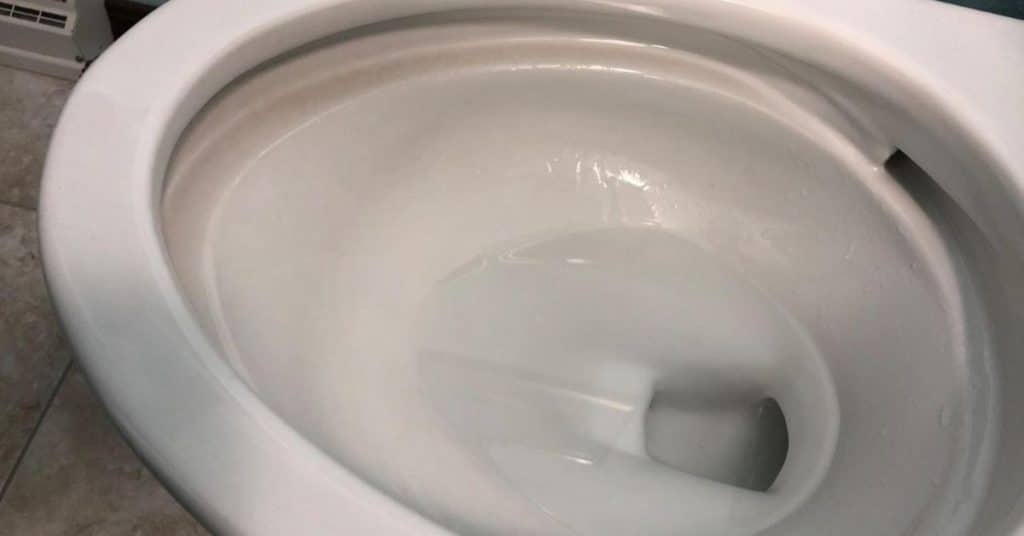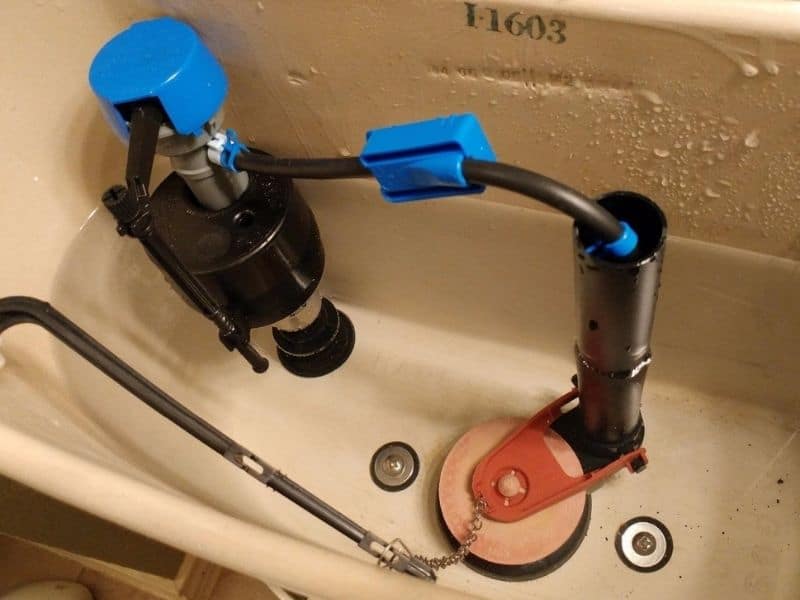How to Quickly Test if a Toilet is Leaking
Last Updated on October 4, 2023 by toilethaven
How can you tell if a Toilet is Leaking?
It is very possible for a toilet to leak without you knowing, especially if it is leaking from the tank to the bowl. A slow leak can go unnoticed for a long time unless it leaks between the tank and the bowl, resulting in a pooling of water at the toilet’s base.
A worn-out/warped/dirty toilet flapper causes a leaking toilet from the tank to the bowl. That causes water to seep from underneath it to the toilet bowl via the flush valve. Replacing or cleaning the flapper is the solution to this problem.

For a toilet leaking between the tank and the bowl, the cause is usually a worn-out toilet tank-to-bowl gasket or loose/corroded tank bolts. Replacing one or both parts is usually enough to fix the problem.
On the other hand, if your toilet leaks from the base after flushing, the wax ring is no longer sealing, or the toilet bolts are loose. Tightening the bolts or replacing the wax ring will fix the problem.
To test if a toilet leaks, lift off the tank lid, add a few drops of food color or dye, and wait up to 1 hour without flushing the toilet. If the food color appears in the bowl after some time, you have a leaking toilet. Clean or replace the toilet flapper/flush valve seal.
Other methods exist to test for a leaking toilet, but the above is the easiest. I will, however, show you all of them.
To test if your toilet leaks underneath it, flush it and check if water will seep out or pool at the toilet’s base. Alternatively, you can check if the basement ceiling is damp or the color is peeling off.
How and Why Toilets Leak
A toilet flapper makes a watertight seal on top of the flush valve opening. The flush valve is the opening at the bottom of the tank through which water leaves the tank and enters the bowl during flushing.
A flexible chain called a lift chain is used to connect the toilet flapper to the flush lever arm. To flush the toilet, you pull the flush lever down, and as a result, the lift chain gains some tension, lifting the flapper off the flush valve.

When you release the handle, the flapper falls back in position, creating a seal that stops water from leaving the tank, allowing it to refill.
With time, the toilet flapper (being made of rubber) will warp/bend and, as a result, will stop sealing properly around the flush valve. Minerals deposits (especially calcium) and other debris can get trapped underneath the flapper, restricting it from sealing properly.
On rare occasions, the lift chain can get hooked/entangled with other parts inside the toilet tank, slightly lifting the flapper off the flush valve. This can also cause the toilet to leak from the tank to the bowl.
If you have a new toilet or just replaced the toilet flapped, but still your toilet is leaking, the lift chain could be too tight. Ideally, the lift chain should have a ½-inch slack. Not too loose and not too tight.
How to Test if Your Toilet is Leaking
There are 3 methods I use to test if a toilet is leaking from the tank to the bowl. Let us go through each one of them:
1. Use Food Color

- Start by lifting off the toilet tank lid and placing it away in a safe place where it cannot fall off and crack/break.
- Add a few drops of food coloring into the toilet tank. Just enough to change the color of the water.
- Wait for about 30 minutes to 1 hour without flushing the toilet.
You have a leaking toilet if the food color appears inside the toilet bowl. On the other hand, if nothing happens, your toilet is not leaking.
For a toilet that is leaking between the tank and the bowl, that is where the food color will appear.
2. Use a Piece of Toilet Paper
- Cut about ten toilet paper sheets and fold them into a roll.
- Use a dry piece of cloth (or just toilet paper) to wipe dry the inside of the bowl, especially around the rim of the bowl.
- Place and hold the toilet paper roll on the rim of the toilet bowl for about 10 minutes. You need strong knees for this, but you can bring a chair to your bathroom if you don’t feel like squatting.
If, after 10 minutes, the toilet paper roll is soaked with water, you indeed have a leaking toilet.
3. Drain the Toilet Bowl
As you already know, some water is always at the bottom of the toilet bowl. This water acts as a barrier, preventing sewer gases from entering the toilet drain.
For this test, you need to completely drain the bowl; hopefully, no gases will come up. You can open all the bathroom windows and start the fan if you have one.
- Use a toilet plunger to force as much water as possible down the drainpipe.
- Wear nylon gloves and soak up the remaining water using a sponge or cloth until the bowl is empty.
- Wait for about 30 minutes.
If the toilet leaks, water will start accumulating at the bottom of the bowl (thanks to the shape of the toilet’s P-trap). If this happens with your toilet, you, without a doubt, have a leaking toilet.
How to Fix a Leaking Toilet
- Shut off the water to the toilet. The shut-off valve is on the wall behind the toilet. Turn it clockwise.
- Flush the toilet and hold the lever down to remove as much water as possible from the tank.
- Remove the toilet tank lid and place it away.
- Disconnect the lift chain from the flush lever arm and drop it inside the tank.
- The flapper is connected to the two pegs on the flush valve. Unhook it and remove it from the tank.
- Inspect its condition. Is it dirty, warped, or just too old and worn out?
- If it is dirty, clean it in a nearby sink until all the debris is removed.
- Connect it back and hook up the lift chain to the flush lever arm
- Turn on the water and repeat the leaking test.
- If the leaking stops, put back the lid and enjoy your toilet.
- On the other hand, if the leaking persists, you will need to replace the flapper.
- Replace the flapper if the old one is warped.
Toilet flappers vary in size. You can have a 2/3/4-inch toilet flapper, depending on the size of your toilet’s flush valve. If you are unsure which size to buy, take your old flapper to a home improvement store and buy an exact one.
To replace a toilet flapper, you will only need to remove the old one and hook up the new one. Do not forget to clean the top of the flush valve where the valve sits.
Dual-flush toilets are a little different. They use a flush valve seal instead of the usual toilet flapper. I have written a detailed guide on how to fix a leaking/running dual flush toilet. Read it here.
And basically, that is how to test and fix a leaking toilet.